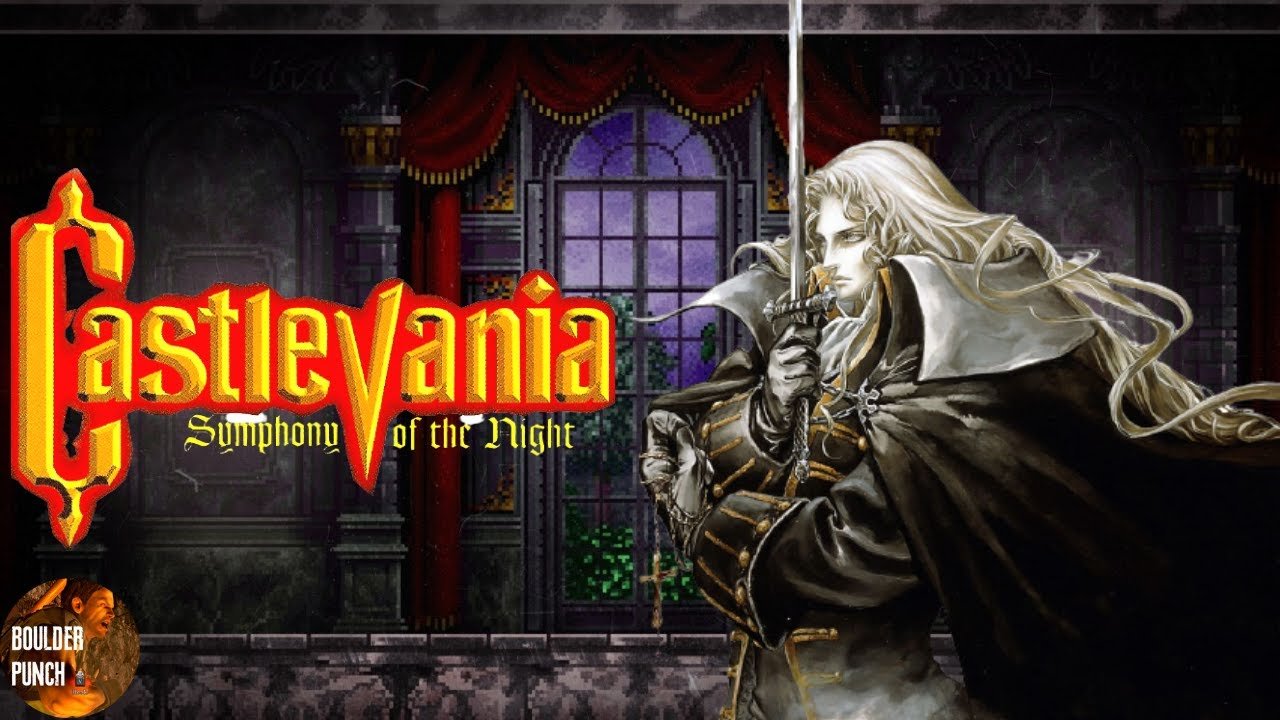Castlevania: Symphony of the Night
Unveiling the Legacy of Castlevania: Symphony of the Night
Castlevania: Symphony of the Night, released in 1997, stands as a pivotal entry in the renowned Castlevania franchise developed by Konami. Known for its innovative gameplay mechanics, captivating storyline, and impressive graphics, Symphony of the Night continues to be celebrated as a classic within the gaming community. In this review, we will delve into the various aspects that have contributed to the enduring legacy of this iconic title.
Introduction
The Castlevania franchise made its debut in 1986, introducing players to the Belmont family, a lineage of vampire hunters dedicated to vanquishing the evil Count Dracula. With a history spanning over three decades and numerous installments across various platforms, Castlevania has cemented its status as a cornerstone of the action-adventure genre in gaming.
Among the extensive roster of Castlevania games, Symphony of the Night holds a special place. Departing from the linear level design of its predecessors, the game embraced a non-linear exploration-based approach, setting a new standard for future titles in the series. This shift in gameplay mechanics, coupled with its deep narrative and intricate world design, has led Symphony of the Night to be regarded as a defining moment in the franchise’s history.
The purpose of this review is to explore the gameplay mechanics, graphics, sound design, storyline, characters, impact, and overall legacy of Castlevania: Symphony of the Night, highlighting the elements that have contributed to its enduring popularity among gamers.
Gameplay Mechanics
1. Exploration
One of the standout features of Symphony of the Night is its emphasis on exploration. The game presents a sprawling, interconnected world filled with secrets, hidden passages, and unlockable abilities that encourage players to revisit areas to uncover new paths. This Metroidvania-style gameplay, a fusion of elements from the Metroid and Castlevania series, rewards thorough exploration and mastery of the map layout.
2. Combat System
The combat system in Symphony of the Night is fluid and responsive, allowing players to execute a variety of attacks, spells, and special moves. Players can collect a wide array of weapons and equipment throughout their journey, each offering unique properties and playstyles. Boss encounters are challenging and require strategic thinking to overcome, adding depth to the combat experience.
3. Character Progression
As players explore the game world, they gain experience points by defeating enemies, which in turn allows them to level up and enhance their character’s attributes. Additionally, Symphony of the Night introduces a robust equipment and leveling system that enables players to customize their playstyle by equipping different weapons, armor, and accessories to suit their preferences.
4. Boss Battles
Boss battles serve as climactic encounters in Symphony of the Night, testing players’ skills and knowledge acquired throughout the game. Each boss possesses unique attack patterns and weaknesses, requiring players to adapt their strategies to emerge victorious. These challenging engagements stand out as memorable moments that contribute to the game’s overall excitement.

Graphics and Sound Design
1. Visual Aesthetics
Symphony of the Night boasts rich and detailed pixel art visuals that bring its gothic-inspired world to life. The intricate level design, enemy sprites, and atmospheric backdrops create a hauntingly beautiful setting that immerses players in the dark fantasy realm of Castlevania. The art direction remains visually striking even years after its initial release.
2. Soundtrack and Audio Effects
The game’s soundtrack, composed by Michiru Yamane, is lauded for its haunting melodies and atmospheric themes that perfectly complement the game’s gothic ambiance. From eerie dungeon tracks to epic boss battle music, the score enhances the player’s experience and sets the tone for each area in the game. Additionally, the sound effects, from the clang of weapons to the cackling of monsters, add depth to the game world’s auditory immersion.
Storyline and Characters
1. Protagonists
Players assume the role of Alucard, the dhampir son of Dracula, who awakens from a long slumber to investigate the sudden reappearance of the dark lord’s castle. Alucard’s journey is driven by a desire to uncover the truth behind Dracula’s resurrection and put an end to his reign of terror. His conflicted nature and powerful abilities make him a compelling protagonist in the Castlevania universe.
2. Antagonists
Dracula, the primary antagonist of the series, serves as the central threat in Symphony of the Night. His sinister presence looms over the narrative, challenging Alucard at every turn. Alongside Dracula, players encounter a diverse cast of monstrous adversaries, each with their motivations and connections to the overarching plot.
3. Plot Summary
The story of Symphony of the Night unfolds as Alucard navigates the ever-changing halls of Castlevania, confronting allies and foes alike in his quest for answers. Themes of betrayal, redemption, and destiny permeate the narrative, leading to multiple endings based on the player’s actions and choices throughout the game. The intricate storytelling weaves together elements of gothic horror and dark fantasy, enriching the player’s immersion in the world of Castlevania.
Impact and Influence
1. Cultural Impact
Castlevania: Symphony of the Night has left a lasting imprint on gaming culture, inspiring a new wave of exploration-based titles that prioritize non-linear gameplay and intricate level design. The game’s success paved the way for future Metroidvania games, influencing developers to incorporate similar mechanics in their projects.
2. Legacy in the Gaming Industry
Regarded as a masterpiece by both critics and fans, Symphony of the Night continues to be referenced as a benchmark for game design excellence. Its legacy extends beyond its initial release, with subsequent Castlevania titles drawing inspiration from its innovations in gameplay and storytelling.
3. Fan Following
Over the years, Symphony of the Night has garnered a dedicated fan base that appreciates its timeless gameplay, engaging narrative, and memorable characters. The game’s enduring popularity is evident in fan creations, speedrunning community events, and discussions that celebrate its impact on the gaming landscape.
Review
In our detailed analysis of Castlevania: Symphony of the Night, we have explored the game’s gameplay mechanics, graphics, sound design, storyline, characters, impact, and overall legacy. While the game excels in many areas, it is not without its flaws. The seamless blend of exploration, combat, and character progression creates an immersive experience that captivates players from start to finish. However, some may find certain elements of the game, such as backtracking or difficulty spikes, to be challenging.
Pros:
- Engaging non-linear exploration
- Deep combat and character customization
- Stunning pixel art visuals
- Memorable soundtrack and sound design
- Rich narrative and character development
Cons:
- Backtracking may feel tedious for some players
- Difficulty spikes in certain areas
- Limited guidance on progression for newcomers
Final Verdict
Castlevania: Symphony of the Night stands as a timeless classic that continues to enchant players with its atmospheric world, engaging gameplay, and captivating storyline. Despite its age, the game remains a shining example of masterful game design that has stood the test of time, solidifying its reputation as a must-play for fans of the action-adventure genre.
INTERESTING TIPS TO IMPROVE YOUR GAME
| Key Tips for Castlevania: Symphony of the Night Review |
|---|
| 1. Exploration: Enjoy a sprawling, interconnected world with hidden secrets and unlockable abilities for thorough exploration. |
| 2. Combat System: Experience fluid and responsive combat with a variety of attacks, spells, and strategic boss battles. |
| 3. Character Progression: Level up, customize your character with equipment, and adapt your playstyle to suit your preferences. |
| 4. Graphics & Sound: Immerse yourself in rich pixel art visuals and a haunting soundtrack that enhances the gothic ambiance. |
| 5. Storyline & Characters: Play as Alucard, uncover the truth behind Dracula’s resurrection, and navigate themes of betrayal and redemption. |
| 6. Impact & Influence: Appreciate the cultural impact, legacy in the gaming industry, and dedicated fan following of Symphony of the Night. |
| 7. Review: Dive into a detailed analysis of the game’s gameplay, graphics, sound design, storyline, and overall experience. |
| 8. Pros & Cons: Explore the game’s strengths in exploration, combat, visuals, soundtrack, and narrative, along with potential drawbacks. |
| 9. Final Verdict: Discover why Castlevania: Symphony of the Night remains a timeless classic with captivating gameplay and a compelling storyline. |




